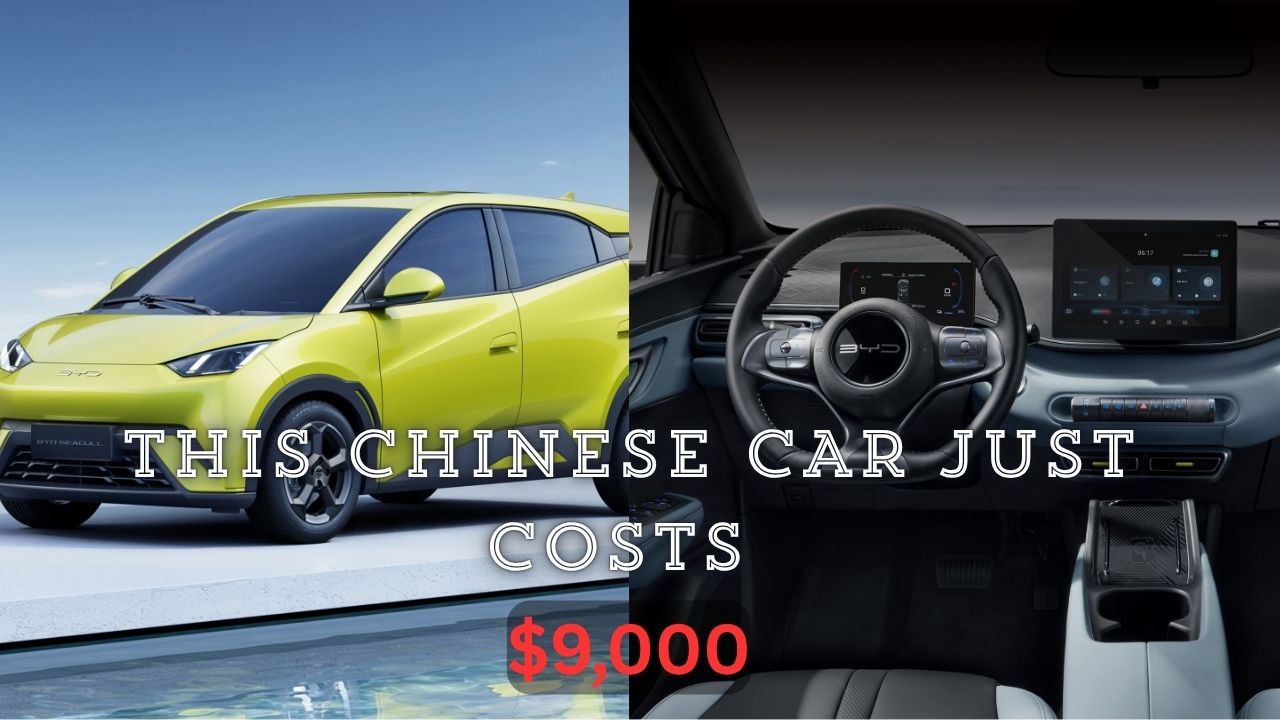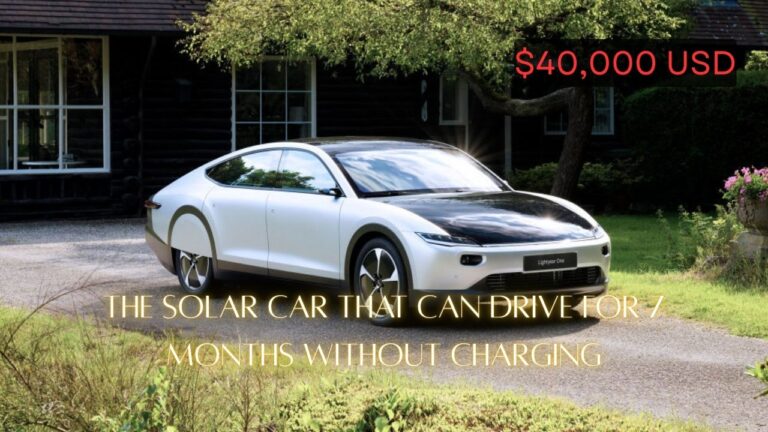China’s ultra-cheap EVs under $10,000 are dominating the global market — and leaving legacy automakers like BMW and Honda struggling to catch up. Here’s why they’re winning.
The $9,000 EV That’s Making BMW Nervous
In 2025, the hottest electric cars aren’t coming from Tesla, BMW, or Honda. They’re coming from Wuling, BYD, and Geely — and some of them cost less than a mid-range smartphone.
At just $5,000 to $9,000, these Chinese EVs are cheap, compact, efficient, and everywhere. They’re dominating not just China’s massive domestic market, but also emerging economies — and now they’re expanding into Europe, South America, the Middle East, and even U.S. urban pilot fleets.
It’s not just about price. These cars are changing the psychology of ownership and reshaping the auto industry from the bottom up.
Small Cars, Massive Disruption
Legacy automakers never expected that a 2-door EV, the size of a golf cart, could outsell luxury SUVs.
Today’s Chinese micro-EVs offer:
- Touchscreens
- Parking sensors
- Regenerative braking
- Voice controls
- Up to 300 km (186 miles) of real-world range
All for under $10,000. They’re not just cheap. They’re designed to be practical, well-integrated, and purpose-built for the urban sprawl.
While European and American manufacturers chased high-performance EVs with larger batteries, Chinese firms bet on practical utility. And it’s paying off.
Who’s Leading the EV Price War?
1. Wuling Hongguang Mini EV
- Starting price: $4,800
- Sales: Over 1 million units in China alone
- Best for: City driving, ride-share, students, seniors
- Range: 120–170 km depending on variant

2. BYD Seagull
- Starting price: $11,000 (under $9,000 in subsidized markets)
- Range: Up to 405 km
- Features: BYD’s in-house Blade Battery, fast charging, robust infotainment system
- Target markets: Southeast Asia, Latin America, Eastern Europe

3. Geely Panda Mini EV
- Starting price: $5,300
- Features: Compact and aesthetic design, advanced connectivity
- Expansion: Launches in the Middle East, Eastern Europe, and India underway

Other players like Chery, Dongfeng, and Leapmotor are also entering the sub-$10,000 segment with increasingly competitive offerings.
Why They’re Winning
1. Price Advantage
You can buy five Wuling Mini EVs for the price of one Honda Civic.
That’s game-changing for middle-class families, rideshare drivers, and delivery fleets.
As the global middle class demands more affordable transport options, Chinese micro-EVs fill the gap that traditional carmakers have largely ignored.
2. Built for the New Normal
Urban trips average under 20 km per day. These cars are perfect for:
- Narrow roads
- Dense cities
- Smart mobility zones
- Low insurance and running costs
In congested cities like Jakarta, Mumbai, Manila, or Nairobi, micro-EVs are perfectly suited to weave through traffic and park in tight spots — with minimal operating costs.
3. Battery Innovation
Chinese EVs use safer, cheaper LFP batteries.
BYD’s Blade Battery is:
- Long-lasting (over 3,000 cycles)
- Fast-charging
- Less dependent on rare-earth materials like cobalt and nickel
This keeps costs low while maintaining safety and range. These batteries also perform better in hot climates, giving them an advantage in the Middle East, India, and parts of Africa.
4. Government Support and Local Manufacturing
China’s massive push toward EV dominance is also supported by:
- Government incentives and rebates
- Local battery supply chains
- EV-specific infrastructure development
Now, Chinese firms are replicating that model in other countries. BYD is setting up manufacturing in Thailand, Hungary, and Brazil. Wuling is assembling vehicles in Pakistan and Egypt. It’s localization at scale.
Legacy Automakers Are Falling Behind
BMW and Honda are still focused on premium EVs:
- BMW i4: $56,000+
- Honda Prologue: $48,000+
- Limited variants under $30,000 — none below $20K
Meanwhile, most consumers are asking:
- Can I afford this EV?
- Can I charge it easily?
For millions, Chinese EVs are the answer. Legacy automakers are struggling to compete on price, simplicity, and regional adaptability. They’re stuck in a premium cycle while the mass market is evolving fast.
Moreover, traditional dealerships and sluggish EV rollout timelines hurt consumer adoption. Chinese brands use online-first models and ship-ready stock.
EV Fleets Are Going Micro
Logistics and last-mile delivery are now powered by compact Chinese EVs:
- Food and parcel delivery
- Shared mobility in urban zones
- University and airport utility fleets
Benefits include:
- Low acquisition cost
- No fuel expense
- Easy maintenance
- Customization for commercial use
Companies like Uber, Gojek, and Grab are piloting fleets of micro-EVs in Southeast Asia. Even postal services in Latin America and Africa are exploring Chinese EVs for low-cost deliveries.
Global Expansion: Where They’re Winning
Brazil
BYD has built a local plant in Brazil and leads budget EV sales. It plans to release micro-EVs across South America within 2 years.
Pakistan
Wuling and Geely are introducing city EVs and partnering with local assemblers. In a country with growing fuel prices and limited public transport, demand is strong.
Middle East
Compact EVs are being tested in smart city zones in the UAE and Saudi Arabia. Geely is entering Qatar and Oman with affordable models for universities and taxis.
Turkey & Eastern Europe
BYD has established a regional supply network and aims to challenge Renault’s Dacia Spring in the subcompact EV space.
Africa
Pilot programs are underway in Kenya, Egypt, and Nigeria for city EV adoption. These markets are underserved by major automakers — and ripe for EV disruption.
Are They Safe?
Modern Chinese EVs are increasingly compliant with international safety standards:
- Dual airbags, ABS, and rear sensors are common
- Advanced trims offer lane assist and front collision alerts
- Vehicles pass Euro NCAP and Chinese NCAP for city safety
While these aren’t highway cruisers, they’re designed for urban safety, low-speed zones, and fleet reliability.
Ongoing improvements in crash testing and certification are helping Chinese automakers shed the “cheap and unsafe” stigma.
Cultural Shift: Ownership Is Changing
Young urban drivers don’t dream of big sedans or SUVs anymore. They want:
- Compact mobility
- Connectivity
- Low cost of ownership
- Sustainability
Social media influencers and ride-share drivers are pushing the narrative: “Why spend $40,000 when you only drive 10 km a day?”
Car ownership is becoming less about status and more about functionality and eco-friendliness. And China’s $9,000 EVs fit that shift perfectly.
Final Take
China’s $9,000 EVs are not gimmicks. They’re reshaping global mobility:
- Affordable for first-time buyers
- Practical for urban living
- Clean for the environment
- Scalable for developing economies
BMW and Honda aren’t being replaced. They’re being outpaced.
The EV revolution isn’t just about going electric — it’s about going practical. And China’s compact, accessible electric vehicles are setting the pace.
In the next five years, expect these small EVs to dominate roads, redefine car culture, and rewire how the world moves — one budget-friendly mile at a time.




